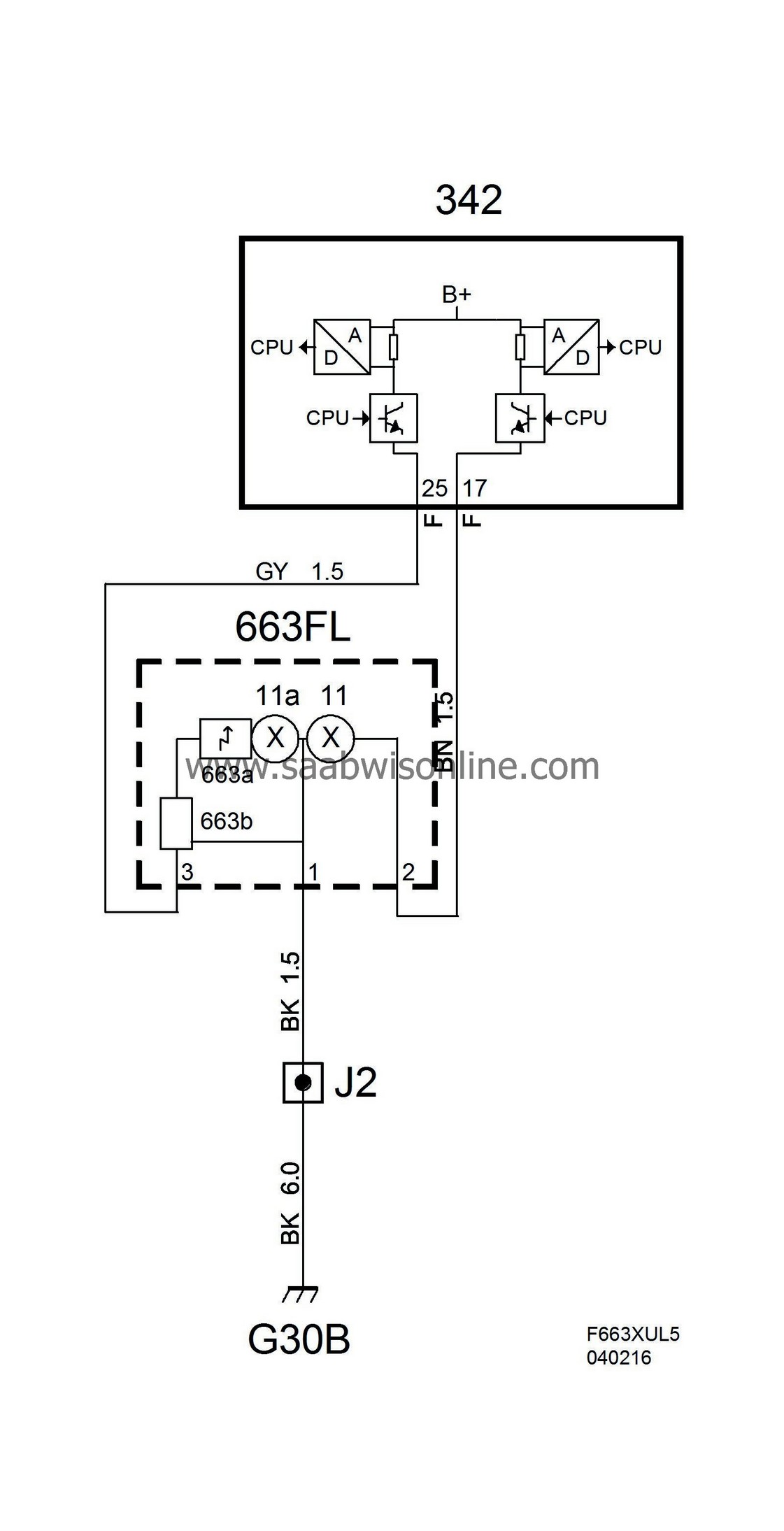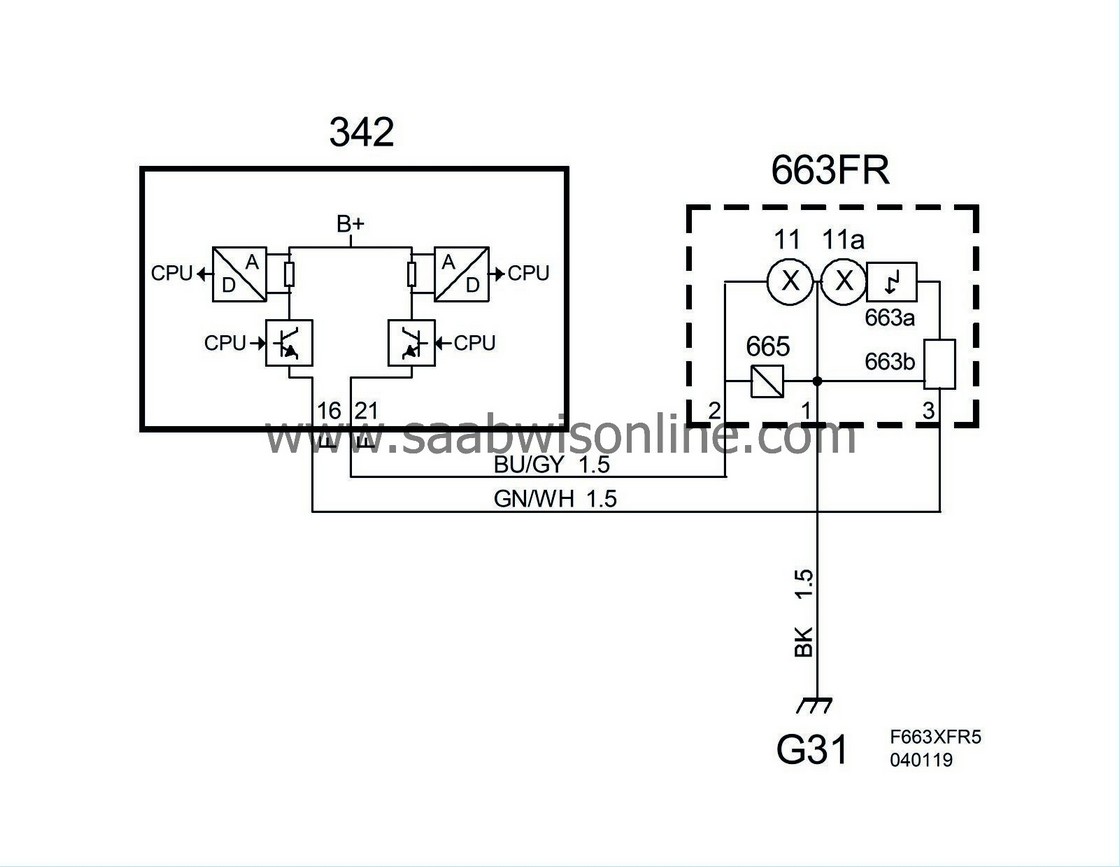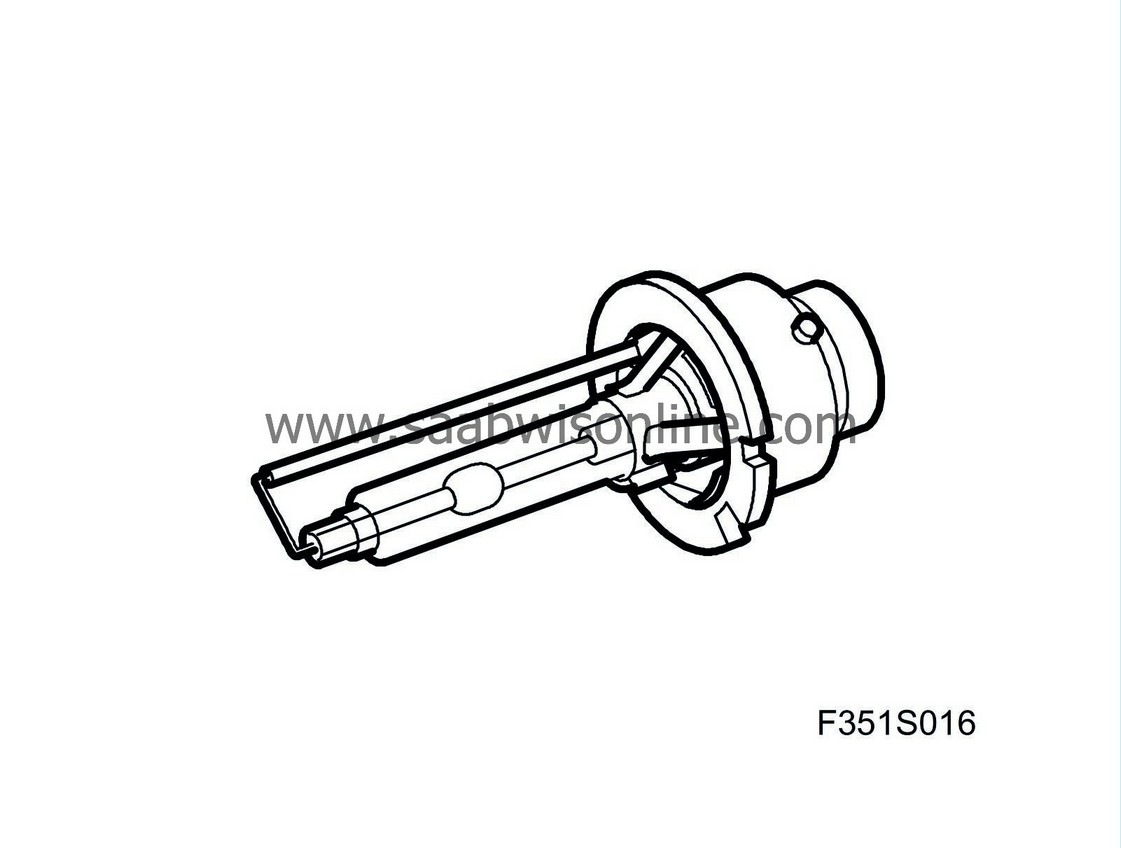Xenon headlamp bulb (11a)
| Xenon headlamp bulb (11a) |
| Main task |
The function of the Xenon bulbs is to provide the car with its dipped and main beam headlights.
| Type |
The Xenon bulb is of type D2S with an output of 35 W. The bulb and ignition transformer form two separate units. The Xenon bulb is a gas discharge bulb and therefore has no filament. Light is produced by a plasma discharge between two electrodes. The distance between the electrodes is 4.2 mm. The electrodes are mounted in a capsule (igniter). The igniter contains the inert gas as well as other substances such as mercury and thallium. It is in this gas mixture that discharge occurs, under high pressure and high temperature.
The pressure in the igniter reaches about 100 bar when the bulb is lit. When the bulb is cold, pressure is approx. 7 bar.
A high-voltage pulse is required to light the bulb and initiate discharge. This high-voltage pulse is generated in the ignition transformer (663a), which also functions as a bulb socket. The high-voltage pulse can normally reach about 23,000 V. When the bulb is removed, the high-voltage pulse can reach 30 kV. Once discharge has been initiated by the high-voltage pulse, power is supplied to the bulb by the ballast (663b). The ballast ensures that the bulb receives the proper operating conditions, normally a supply voltage of 85 V AC and a frequency of approx. 300 Hz.
The bulb has an electric output of 35 W, but generates approx. three times as much light flow as a 55 W H7 bulb.
| Connection |
The Xenon bulb is mounted in the ignition transformer (663a), from which it is supplied power.
LH side US/CA

LH side all other markets

RH side US/CA

RH side all other markets




